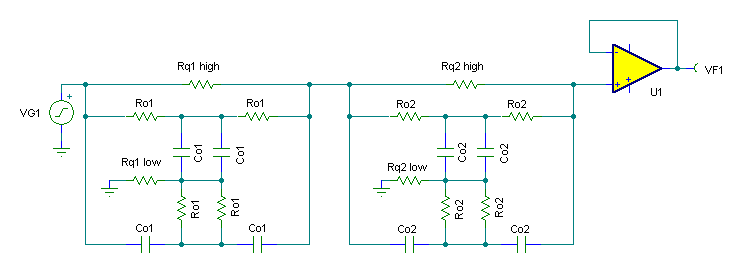
For some time, I have been looking for a technique to reject a band of frequencies, using a single op amp. The only band reject filter that I have recommended to this point is a three op amp topology that uses a high pass filter and a low pass filter - summed together in a third op amp. The breakpoint of the high pass filter is considerably above that of the low pass filter so a band of frequencies between the two is rejected. Three op amps any way you do it.
Looking at the problem from a fresh perspective, I realized that in most cases, it is actually a fairly narrow band of frequencies that must be rejected. The three op amp topology won't work for closely spaced frequencies at all. That leaves using notch filters to do the job, with the notches slightly offset in frequency to form a response that is wider overall. But each Fliege notch takes two op amps, so that would mean four op amps at minimum.
The Twin T Notch topology uses a single op amp. And - the filter networks can be cascaded:

A very common band reject filter application is getting rid of 50 and 60 Hz line hum from products that will be marketed in Europe and the United States. The response below illustrates how easily a single op amp can implement this filter using this technique:

OK, for excited designers - the values used to produce the response above are:
Or, you can get the values yourself from the calculator by entering in 50 and 60 for the notch frequencies, with a reverse Q of 5 in each case.
There is no reason why more notch networks can't be added in series - the ultimate limitation is the input inpedance of the op amp.